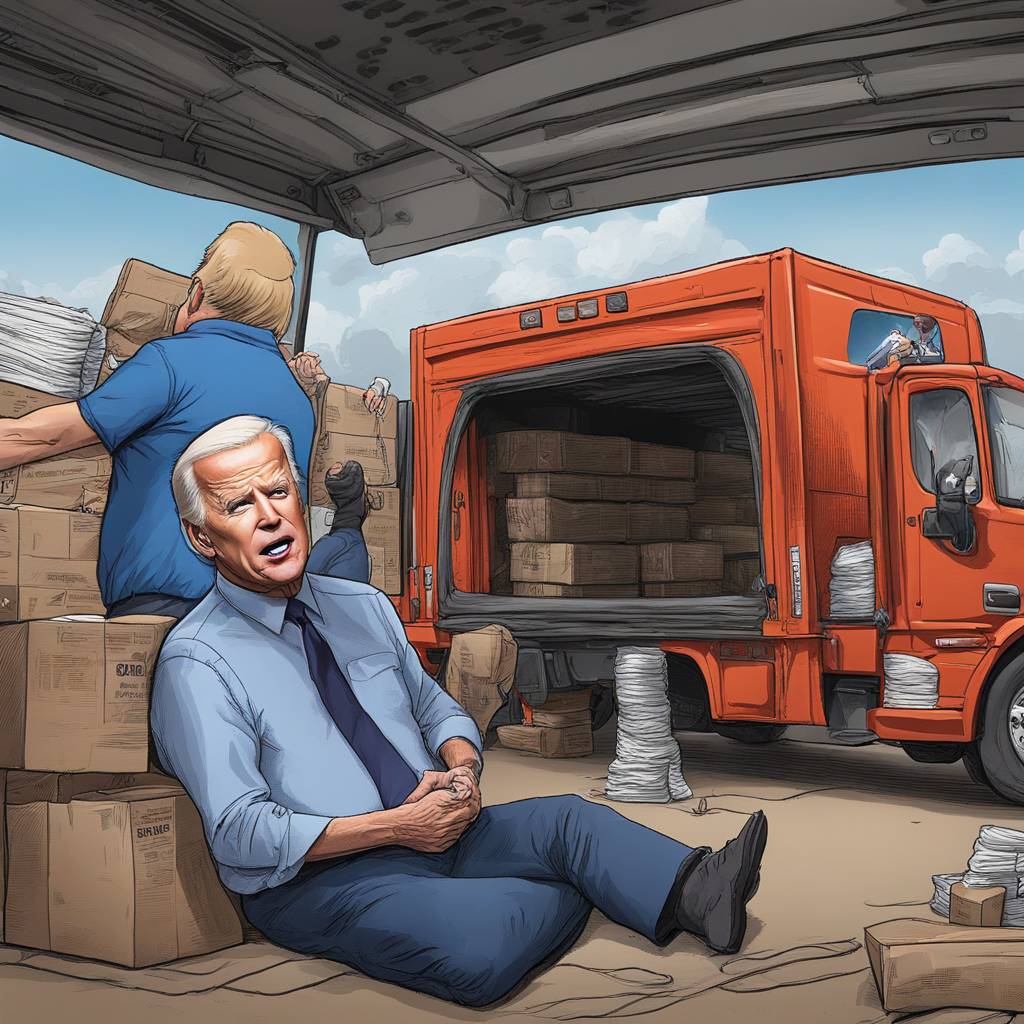Former President Donald Trump recently posted a video featuring an image of President Joe Biden tied up in the back of a pickup truck. Trump indicated that the video was filmed on Long Island while he was attending the wake of NYPD Officer Jonathan Diller, who was killed during a traffic stop. The video shows two trucks with flags and decals expressing support for Trump, with the image of Biden on the back of the second truck. Trump’s campaign spokesman, Steven Cheung, defended the video, stating that it was on the back of a pickup truck traveling down the highway, and accused Democrats of inciting violence against Trump and his family.
Biden’s campaign spokesman, Michael Tyler, responded to the video by condemning Trump’s actions and accusing him of inciting political violence with his inflammatory rhetoric. The US Secret Service declined to comment on the video, stating that they do not confirm or comment on matters of protective intelligence. This incident is just one example of Trump’s use of dark and violent imagery in his campaign messaging, indicating that his controversial rhetoric continues to fuel his White House bid.
Trump has made other controversial remarks recently, including a warning that a loss in the 2024 election would lead to a “bloodbath” for the US auto industry and the country. He promised a “100% tariff” on cars made outside the US, arguing that domestic auto manufacturing would only be protected if he is elected. Additionally, Trump has made inflammatory comments about migrants, accusing them of “poisoning the blood” of the US and quoting Russian President Vladimir Putin to attack Biden as a “threat to democracy.” This pattern of using divisive and aggressive language aligns with Trump’s history of expressing admiration for foreign leaders who use anti-democratic measures to maintain power.
In a campaign event in November, Trump used the word “vermin” to describe his political rivals, drawing criticism from Biden and others who likened his language to that of Nazi Germany. Trump vowed to root out “communists, Marxists, fascists, and the radical left thugs” in the country, framing the real threat as coming from the radical left rather than the radical right. These comments highlight Trump’s divisive rhetoric and his willingness to use violent language to rally support and attack his opponents.
Overall, Trump’s recent actions and statements reflect a pattern of using dark and violent imagery, as well as inflammatory and divisive rhetoric, to promote his political agenda. His controversial remarks and tactics continue to polarize the public and draw criticism from political opponents. As he continues to hint at a potential run for the White House in 2024, Trump’s use of aggressive language and controversial messaging will likely remain central to his political strategy.


